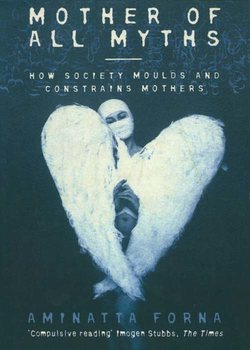Читать книгу Mother of All Myths - Aminatta Forna - Страница 9
Scientific motherhood
ОглавлениеIt is no surprise to discover that, even among those women who benefited from all the changes so far, it took very little time for a downside to the new status of mothers to appear. The impetus was provided by science, which served to provide apparently objective justification for the social repression that was already taking place.
Childbirth was gradually being taken out of the hands of female midwives and delivered into the hands of male physicians, who previously had regarded such work as beneath their dignity. Now there was money to be made in attending births, particularly where they involved middle-class women, and the invention of forceps brought wealth to the men who devised them. At first, though, doctors killed more women and children than they saved by passing on diseases from their other patients. They also used unsterilized equipment and caused the horrific deaths of many women from puerperal fever, or childbed as it was then called. Gradually, with the discovery of bacteria, the development of inoculations and the introduction of standards of hygiene, doctors secured and held steady their power in the birth chamber.
At the same time, in the Western European countries, an understanding of demography led to a parallel fear that nations were effectively disappearing; an idea, as we have already seen, promoted by Jean-Jacques Rousseau and the Philosophes who blamed an apparently declining French population on bad mothers. Census-taking had started in the eighteenth century and a growing awareness of economics linked population size with national wealth.17 Governments began to embrace pronatalist politics and to elevate women’s calling as mothers. In Britain, horror at the waste of infant life prompted the opening of hospitals and homes for foundlings, which were soon inundated. By the 1900s women who practised birth control were accused of racial suicide, but only women of a certain class, of course, for poor people were no more encouraged to procreate then than they are now.
Alongside these new ideas came a trend which has proved to have enormous longevity – that of publishing manuals for women telling them how to be better mothers.18 Most of the earliest pamphlets were reasonably well-intentioned, aiming to bring to an end some of the most misguided childrearing practices and to save infant lives, but even Rousseau, whose stated aim with Emile was to improve the lives of children, couldn’t help throwing in a few side swipes at mothers and women in general. He believed women needed an education only to make them better wives and mothers, which he regarded as their true calling, and not to encourage them in intellectual pursuits in which they persisted. To prove his thesis he pointed to the natural tendency among little girls to play the coquette and to display a fondness for dolls; an observation later rubbished by Mary Wollstonecraft who commented that little girls, who could not share in their brothers’ education and with nothing else to do, would obviously entertain themselves in whatever way they could and with whatever they were given.19
Voices of reason were few and far between, however, as men lined up to give their tuppence-worth on the proper role of women, couched in the guise of maternal advice. By the nineteenth century, badgering mothers had become a popular sport. William Buchan, a Yorkshireman and supporter of Rousseau, published several immensely successful books: Domestic Medicine (1769), Offices and Duties of Mothers (1800), and Advice to Mothers (1803). Domestic Medicine was enormously popular, reprinted many times and published throughout Europe and in America. In it he warned women of the importance of remaining calm and ladylike at all times, and gave the instance of a woman who flew into a rage while pregnant and gave birth to a child with its bowels burst open.20 Andrew Combe’s Treatise on the Physiological and Moral Management of Infancy issued the same advice on the importance of emotional tranquillity to Victorian women, whose children’s physical and mental health he warned would be ‘a legible transcript of the mother’s condition and feelings during pregnancy’.21 And the famous Beeton’s Housewife’s Treasury cautioned women that ill-temper would sour their milk, turning babies’ food into ‘draughts of poison’.22
From that day to this, advice to mothers and mothers-to-be has proliferated, but the warning tone remains the same from Donald Winnicott in the 1950s to Penelope Leach in the 1980s. Indeed, many of the same old chestnuts – for example, putting pressure on women to breastfeed, the idea that unborn children react to their mothers’ emotions, or that motherhood is women’s true calling above and beyond other roles – appear time and time again.
